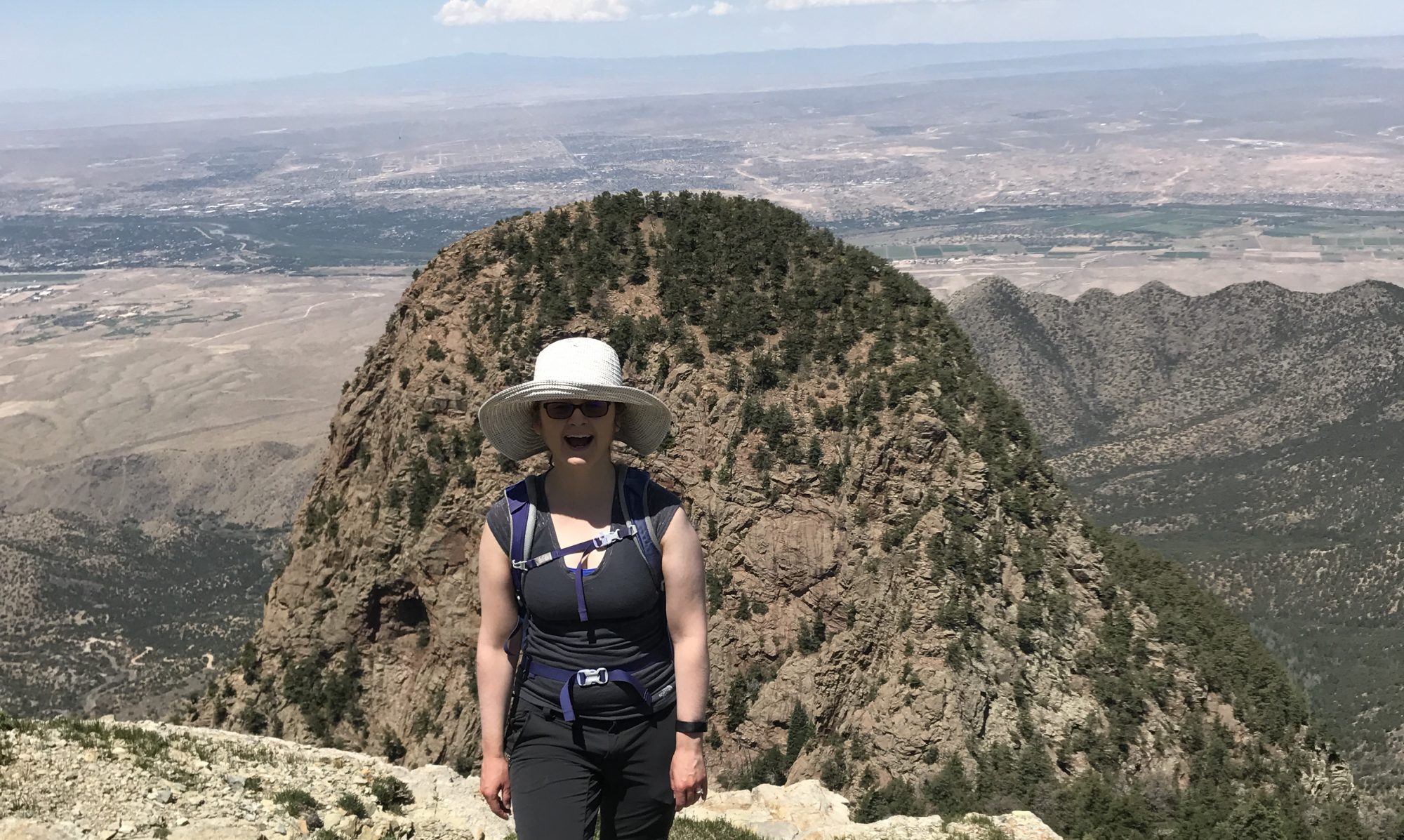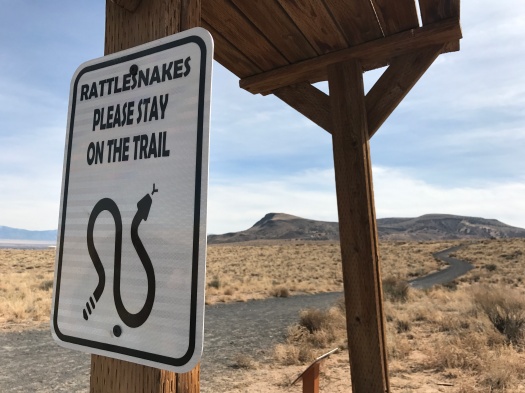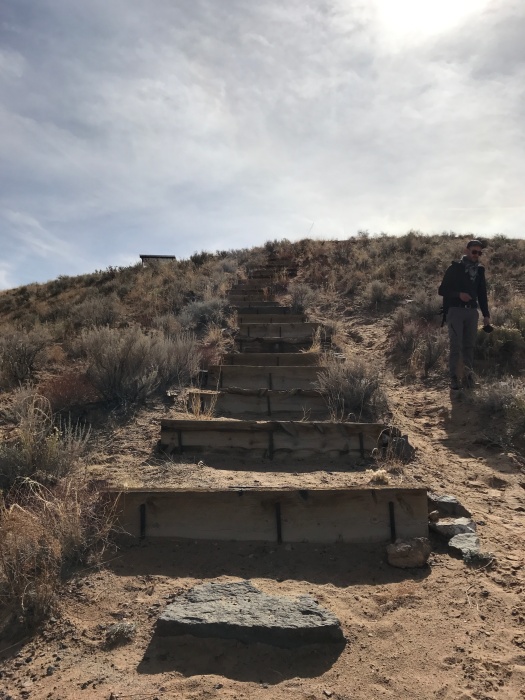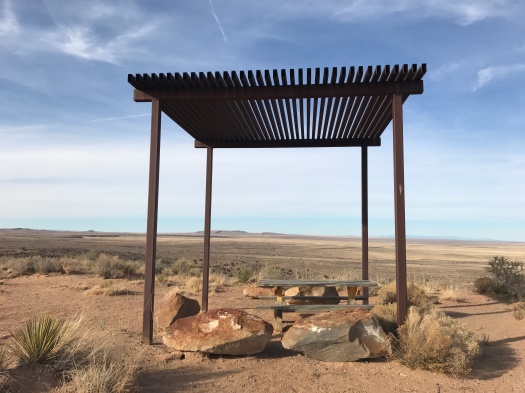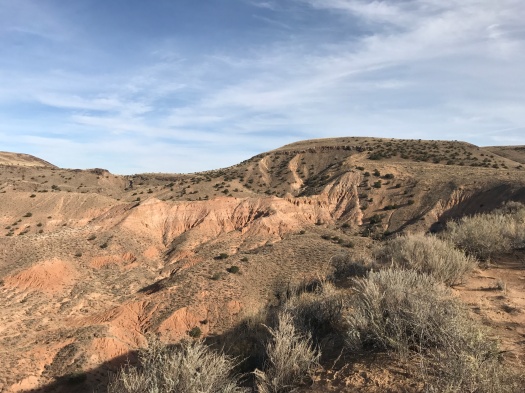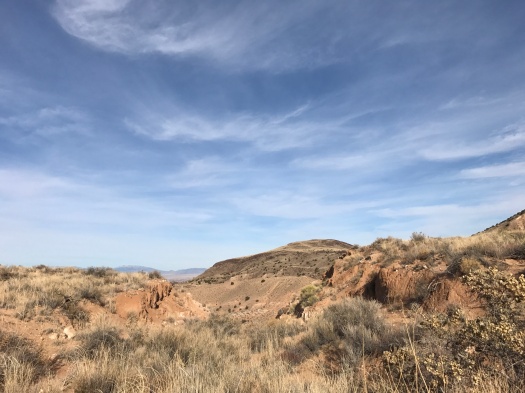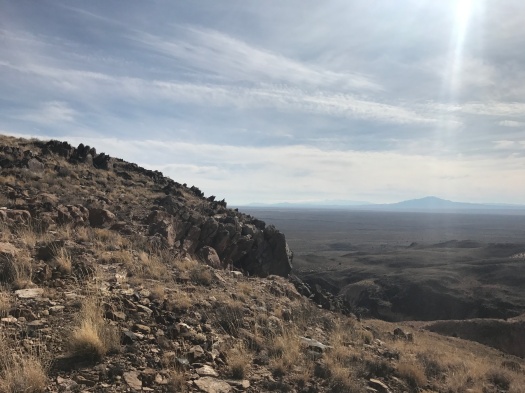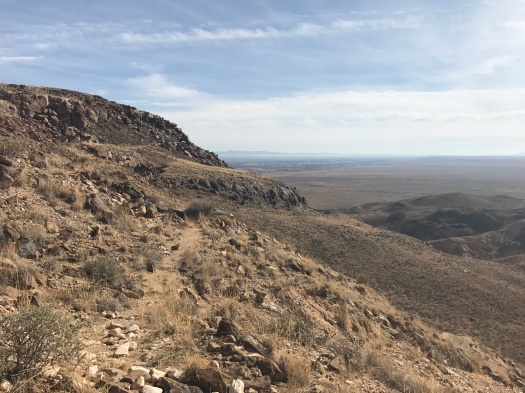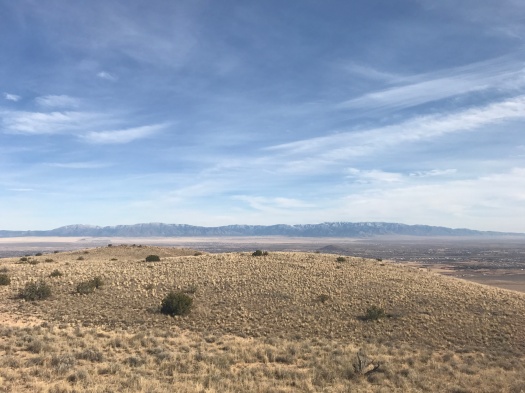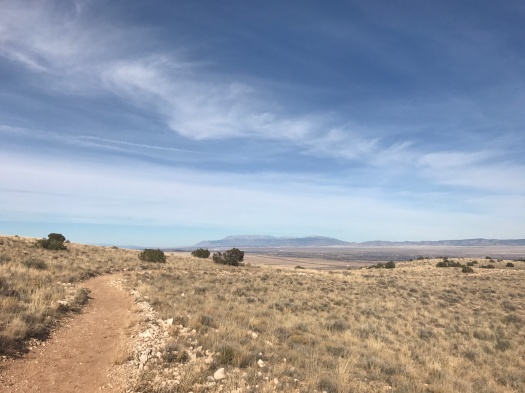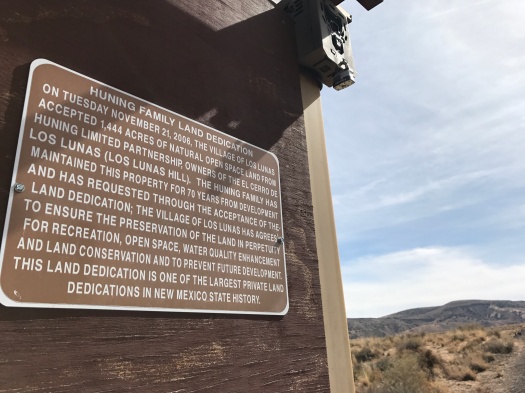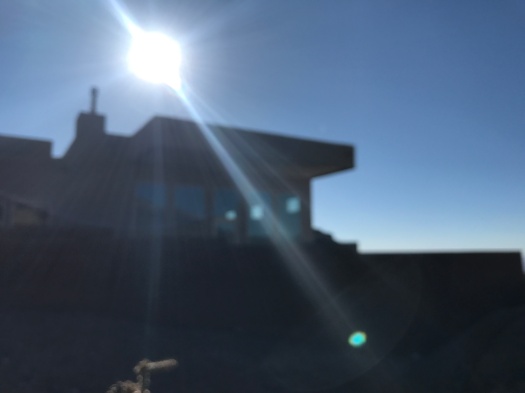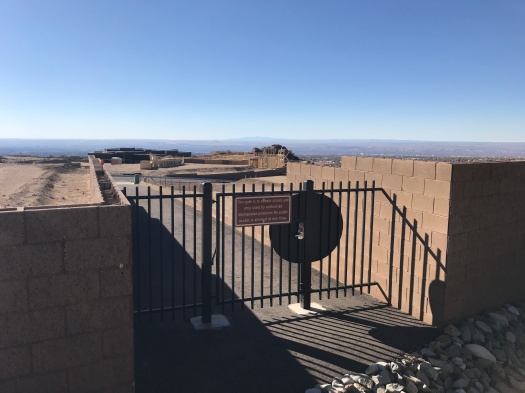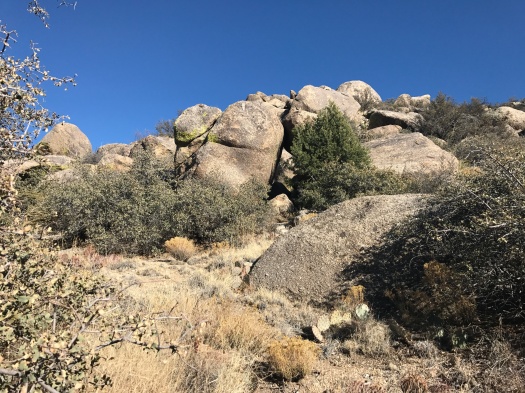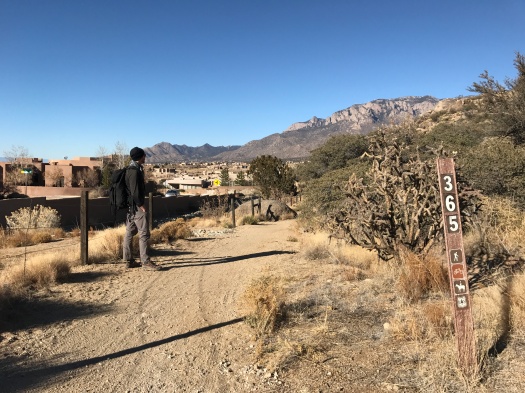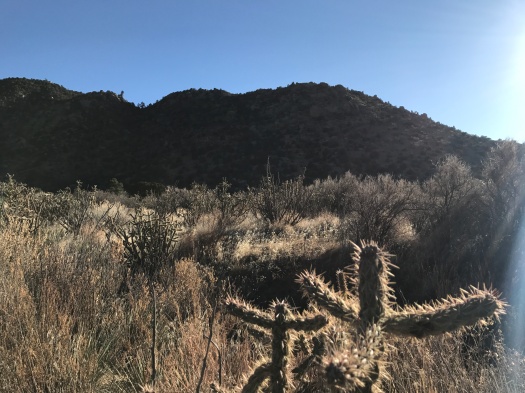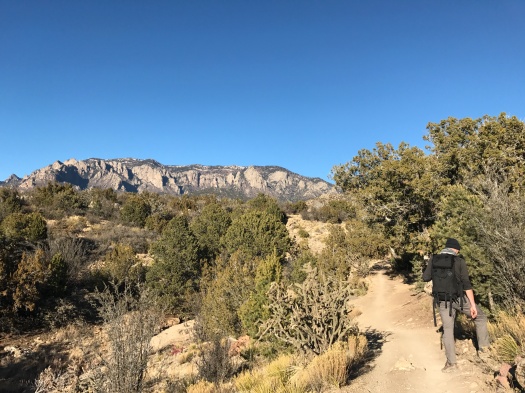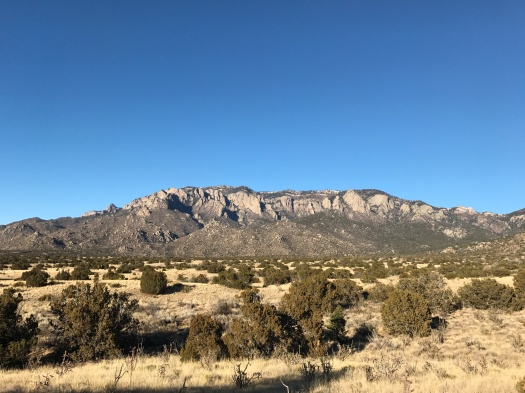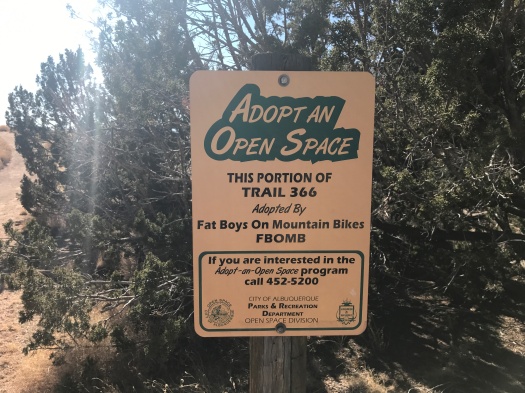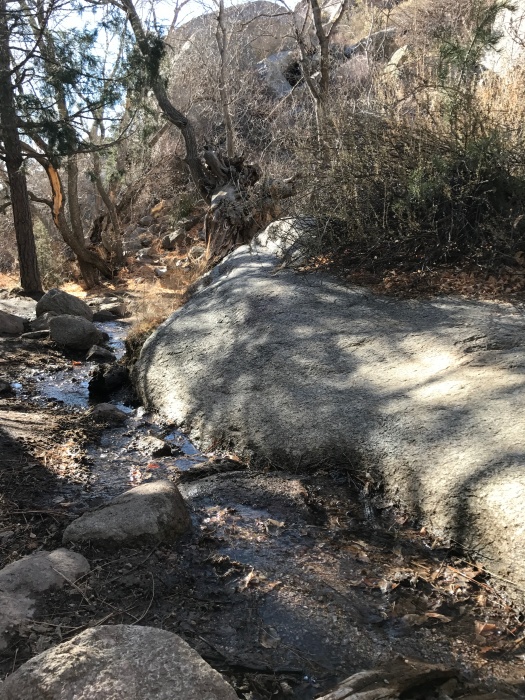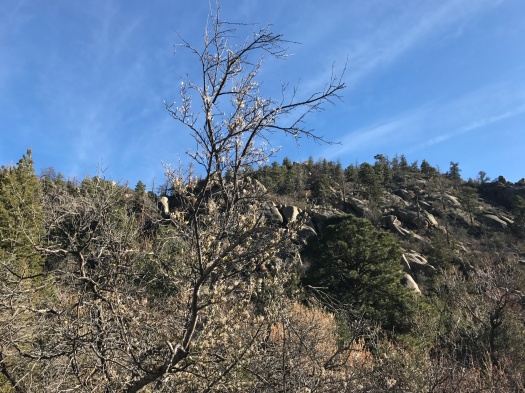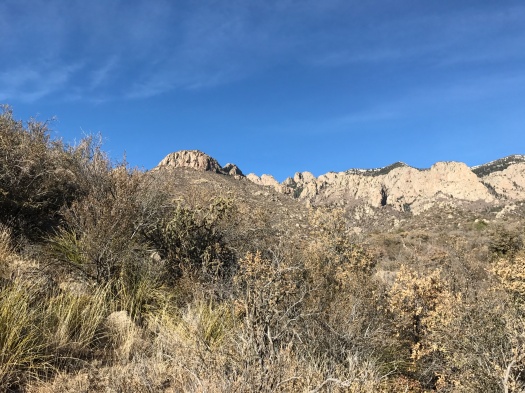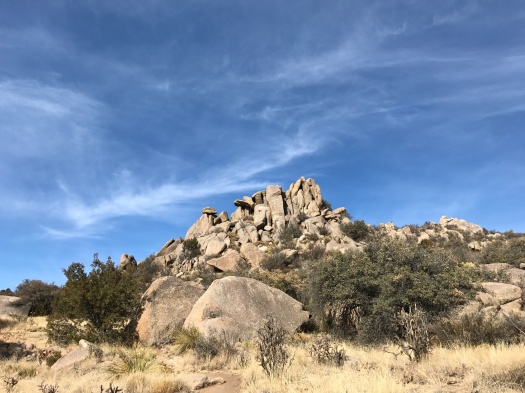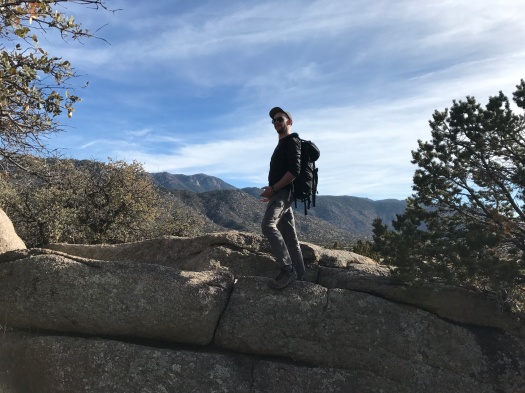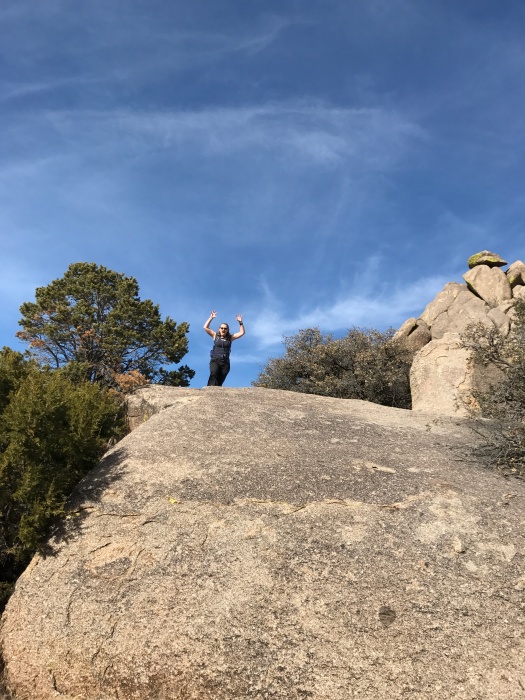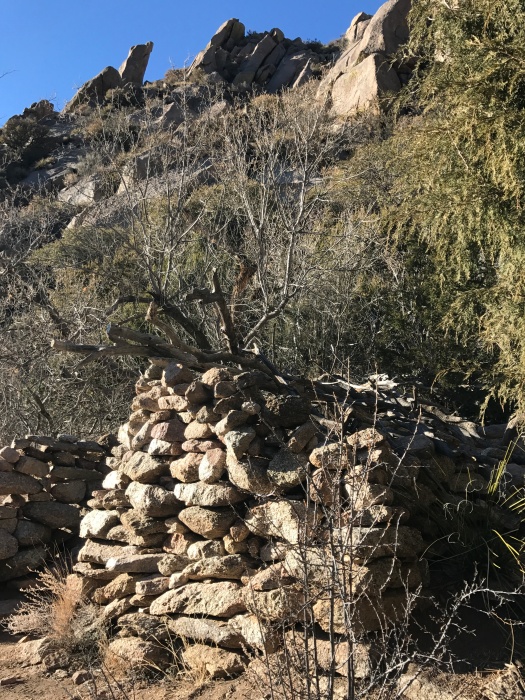Do deer charge? I wondered.
I’d just taken one small step toward a group of five mule deer standing on a ridge about 20 yards away.
The deer in front took one small step in my direction, eyes on me.
I’m not sure what I was expecting, but it definitely wasn’t that.
I recalled some advice about cows from my hiking guidebook: If it doesn’t run away, steer clear.
She didn’t come any closer, though. The group milled around, seeming not to notice the people talking loudly on the trail behind us. Then the deer walked single file along the ridge.
They stopped for a minute. I took one step in their direction, to see around a branch.
Again, the deer in front took one small step toward me. She craned her neck forward. Two deer behind her inclined their heads toward each other, as if to say, “What the hell?”
That’s when we realized there were more than five.
“Eight,” my husband whispered. “No. Nine.”
We watched them until they turned and walked away.
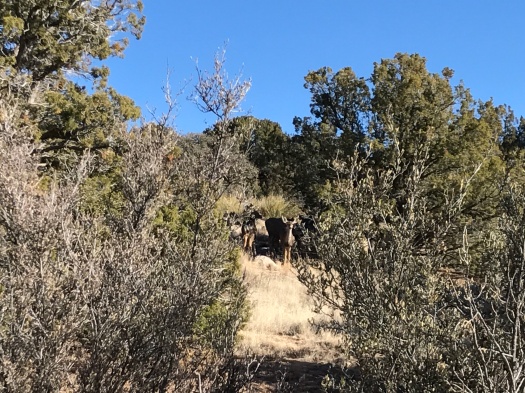
We saw nine deer on the Foothills Trail, one of the most popular trails in the Sandias, just north of the Elena Gallegos Open Space.
We saw nine deer within shouting distance of a warren of cul-de-sacs.
I believe we saw nine deer because the Foothills Trail had probably a third of its normal traffic today.
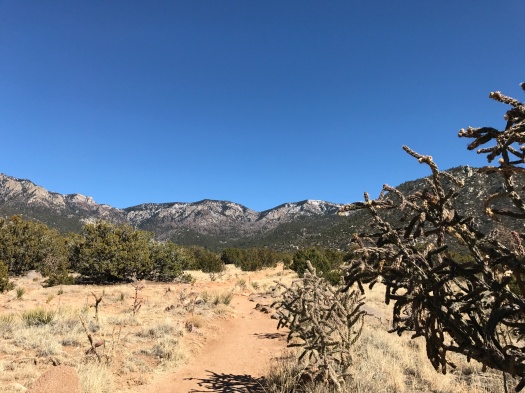
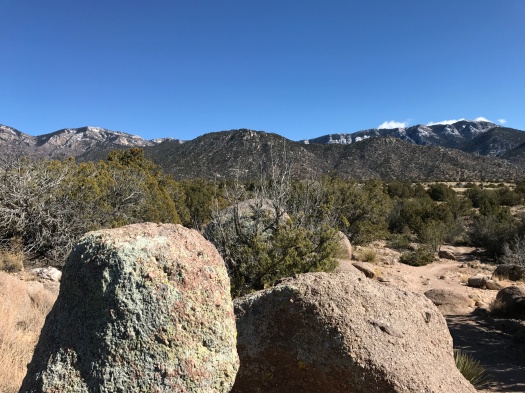
The day was brilliantly blue, but the temperature was only in the low 40s, and a brisk wind howling out of the northwest made it feel 10 degrees cooler. I layered up and put on my winter hat and gloves for the first time since a 7 a.m. hike at high elevation in October.
We still had to leap off the trail for our fair share of mountain bikes, but there was a trickle of them today, not a flood.
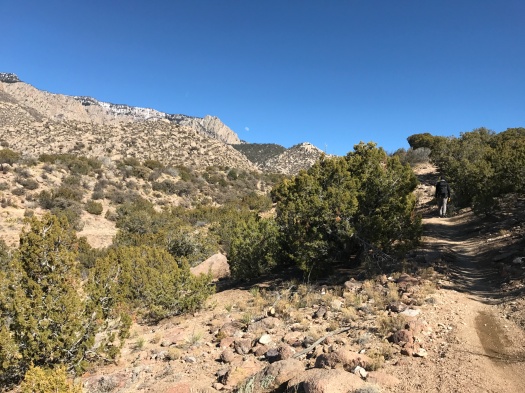
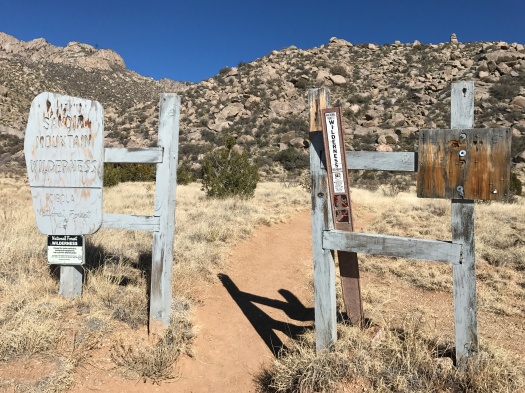
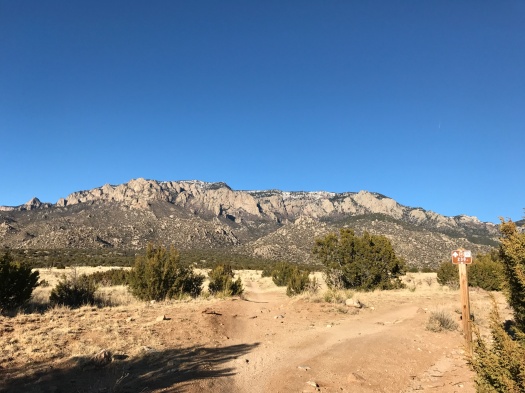
I believe we saw nine deer because the more things you see in the outdoors, the more things you notice. The people behind us walked right past the deer. We could have, too. We probably have walked right past wildlife dozens of times, and will dozens of times more.
If you want to see a bunch of wildlife, you can go to places where you know there’s a lot of wildlife.
Or you can just be outdoors a lot.
I’ve spent most weekends hiking for the past three years. Before today, my grand deer-sighting total was two, spotted separately on the same summer day in Fourth of July Canyon.
There can be long stretches of monotony and when-will-this-end-already in hiking. Like baseball. Or courtroom trials.
But the more you do any of those things, the more you increase your odds of witnessing something spectacular.
Hike length: 6 miles
Difficulty: moderate
Trail traffic: light
Wildlife spotted: mountain bluebirds, jays, mystery bird of prey (probably a hawk), group of deer
